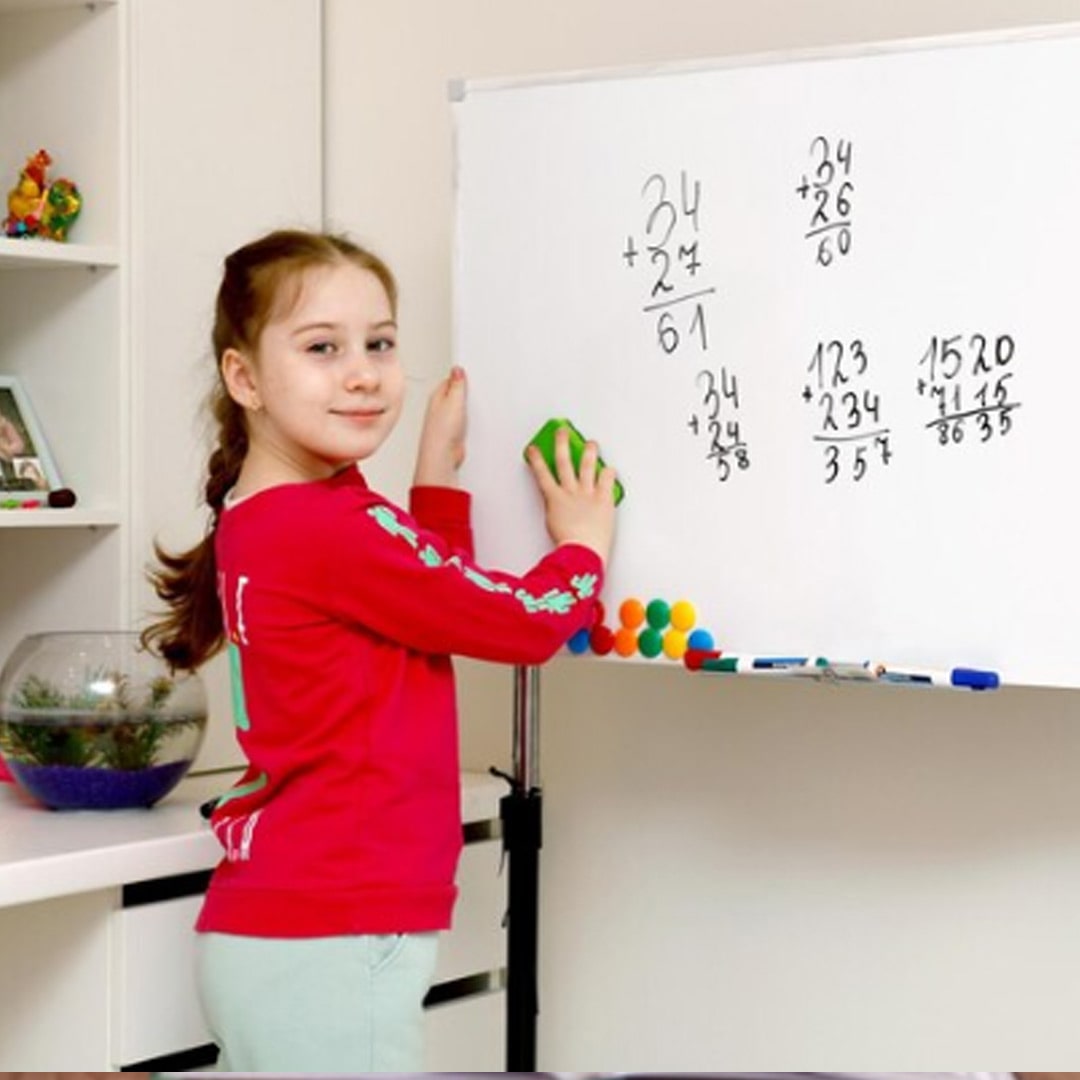Please enter the code we just sent to whatsapp 91-11-46710500 to proceed
Didn't Receive OTP?

Math isn't at all an easy subject; it can sometimes grow overwhelming, particularly with those problems that involve larger numbers; these numbers, to a child, are so large that they completely block the child's mind. However, with quite a few techniques, solving math problems becomes quite easy, if not also enjoyable. The secret lies in breaking complex mathematical problems into small sizes so that they can be handled with a lot of ease. This post will talk about strategies to make big numbers easy and create self-confidence concerning the child in mathematics.It Helps to Break Down Big Numbers
When kids break up a math problem into smaller, actually achievable parts, they reduce their study in such fashion:
Less Mental Burden: Smaller steps would prove easier learning and solving.
Build Confidence: Having a few successes brings a child a sense that he or she has accomplished something.
Encouraging Logical Thinking: Breaking problems in pieces develops analytical and practical concepts.
Here are some effective techniques for simplification of large numbers for the children -.
Example: Addition
Problem: Add 476 + 358.
Break the numbers into hundreds, tens, and ones:
476 = 400 + 70 + 6
358 = 300 + 50 + 8
Add step by step:
Hundreds: 400 + 300 = 700
Tens: 70 + 50 = 120
Ones: 6 + 8 = 14
Combine: 700 + 120 + 14 = 834.
Breaking numbers into place values makes it easier to do multiplication.
Example: Multiplication
Problem: Multiply 23 × 45.
Break the numbers into place values:
23 = 20 + 3
45 = 40 + 5
Use distributive property:
(20+3)×(40+5)(20 + 3) × (40 + 5)(20+3)×(40+5)
= 20×40+20×5+3×40+3×520×40 + 20×5 + 3×40 + 3×520×40+20×5+3×40+3×5
= 800+100+120+15800 + 100 + 120 + 15800+100+120+15
= 1,035.
This method makes the calculation not only easier but also reinforces the concept of place value.
If you're going to do mental math, try to round off numbers to the nearest 10 or 100. It makes calculations easier.
Example: Subtraction
Problem: Subtract 398 from 1,024.
Round 398 to 400 for easier calculation.
Subtract: 1,024−400=6241,024 - 400 = 6241,024−400=624.
Adjust for the rounding: 624+2=626624 + 2 = 626624+2=626.
This is really fast and efficient and also teaches children how to estimate their answers.
Difficult mathematical problems can be reduced to smaller expressions.
Example: Division
Problem: Divide 144 by 12.
Break it into smaller steps:
144÷12=(120÷12)+(24÷12)144 ÷ 12 = (120 ÷ 12) + (24 ÷ 12)144÷12=(120÷12)+(24÷12).
120÷12=10120 ÷ 12 = 10120÷12=10
24÷12=224 ÷ 12 = 224÷12=2
Combine the results: 10+2=1210 + 2 = 1210+2=12.
Dividing an entire problem this way can render division easy to understand and work with.
Draw aids such as number lines, diagrams, and grouping of objects to help children visualize large numbers and their relationships.
Example: Multiplication as Groups
Problem: Multiply 12 × 15.
Visualize as 12 groups of 15 or 15 groups of 12.
Break it down into smaller groups:
12×15=(10×15)+(2×15)12 × 15 = (10 × 15) + (2 × 15)12×15=(10×15)+(2×15).
10×15=15010 × 15 = 15010×15=150
2×15=302 × 15 = 302×15=30
Combine: 150+30=180150 + 30 = 180150+30=180.
Seeing relates the abstract symbols of number to real things, which correlate with meanings and thus make them easier to understand.
Encouraging Step-By-Step Thinking: Teach Problem-Solving One Part at a Time for Kids.
Make It Fun: Use puzzles, games or real-life examples for practice in math.
Reinforce with Practice: A little everyday practice builds confidence in and familiarity with big numbers.
Celebrate Achievements: Notice the small achievements, and learn why with even a little learning, achievers should be motivated.
Teaching kids to tackle big numbers does not have to be overwhelming. Through partitioning problems into smaller components, place value understanding, and visualization techniques, kids can approach complex math problems with confidence. The techniques also make math easier but create a liking for solving problems.
The next time your child finds himself or herself with a hefty math problem, remind them that" One step at a time, and you'll conquer it!"
AlphaMath transforms learning into a fun, game-based adventure, enhancing critical thinking, creative problem-solving, and real-world math applications to help students excel in school and competitions.